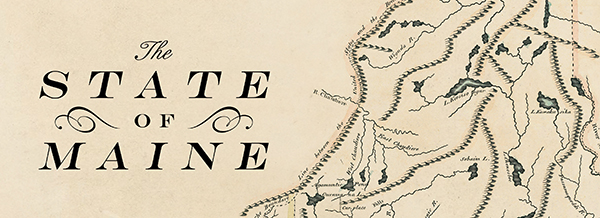
Nurembega, Country of the Mawooshen, Dawnland, New Somerset, Vacationland, The Pine Tree State, The Way Life Should Be?
On March 15, 1820 Maine became the 23rd state in the Union. This year, we mark the 200th anniversary of statehood by exploring Bowdoin’s archive to look closely at this history.
Indigenous people have resided in areas across this region for centuries—we stand on the ancestral lands of the Wabanaki Confederacy—while the first European settlers colonized Maine in the early 17th century. The district was gradually appropriated by Massachusetts beginning in 1651.
The call for Maine’s independence from Massachusetts began long before 1820, with the first attempts beginning in the early 1700s as a growing demographic felt underrepresented by their faraway government in Boston. While the Coasting Law of 1789 bound commercial traders’ allegiance to Massachusetts, inland tensions rose over land claims that would be remediated by independence. Between 1792 and 1819 there were over six distinct (and contentious) elections for separation submitted to the General Court. By the time statehood was actually feasible, the debate fell along party lines: Republicans (Jeffersonians) supporting an independent Maine and the Federalists making up the minority opposition. Statehood was achieved in 1820 under the Missouri Compromise, representing further moral dilemma and ethical debates within the separation movement’s leadership.
The story of Maine and its statehood is complex and complicated. We hope you are inspired to learn more.
A Note on Sources: the materials in Bowdoin’s historic collections routinely reflect dominant perspectives due to historic collecting practices. It is the work of scholars, librarians, and archivists to build representative collections and to read through the absences to build a broader understanding of our history.
